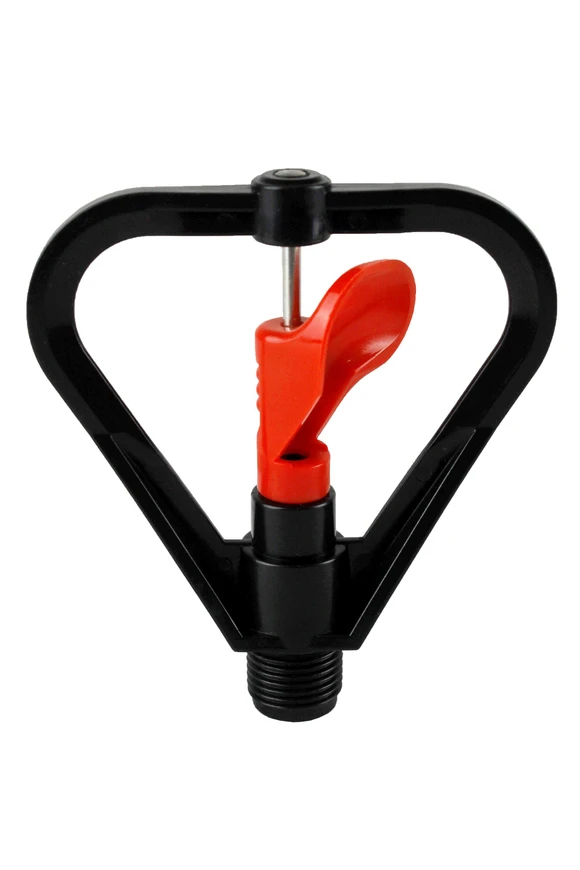Overhead Sprinklers For Irrigation
Grekkon Limited is an irrigation equipment supplier in Kenya. We design, supply, and install all types of overhead sprinklers for irrigation systems, for every acreage and crop. Our overhead sprinklers for irrigation in Kenya are of different types, for different crops, acreage and locations. This is why our technical or agronomy team will visit a grower who needs to install one
It is to assess the land layout and size, topography, water location, water volume, existing water pump if any, and the crop. Through this survey, we recommend the most appropriate sprinkler irrigation kit for the grower based on their budget. For instance, a grower with 100 acres of orchard will have a different sprinkler from a 100 acres of a park covered with grass. Similarly, a farmer on an 1/8 acres of cabbage will have a different sprinkler irrigation kit than the one with 30 acres of cabbage
Overhead Sprinklers For Irrigation
Types
We have these 5 overhead sprinklers for sale types shown below available. For most, there are both metallic and plastic versions. Metallic sprinklers have a longer lifespan, but are costlier and heavier. Plastic sprinklers are lighter, cheaper, but have a shorter period of operation. The body material does not affect the pressure rating, inlet and outlet sizes or the water discharged. For technical details on each type, click on the title links given for every sprinkler
- Rain gun sprinklers for medium-sized to large acreage. Available sprinkler sizes are; 1″, 1-1/4″, 1-1/2″, 2″, and 2.5″. We supply and install the double nozzle PY, Atom, and flange type rain guns. The latter are for broad acreage and require very high water volume, and high operating pressure
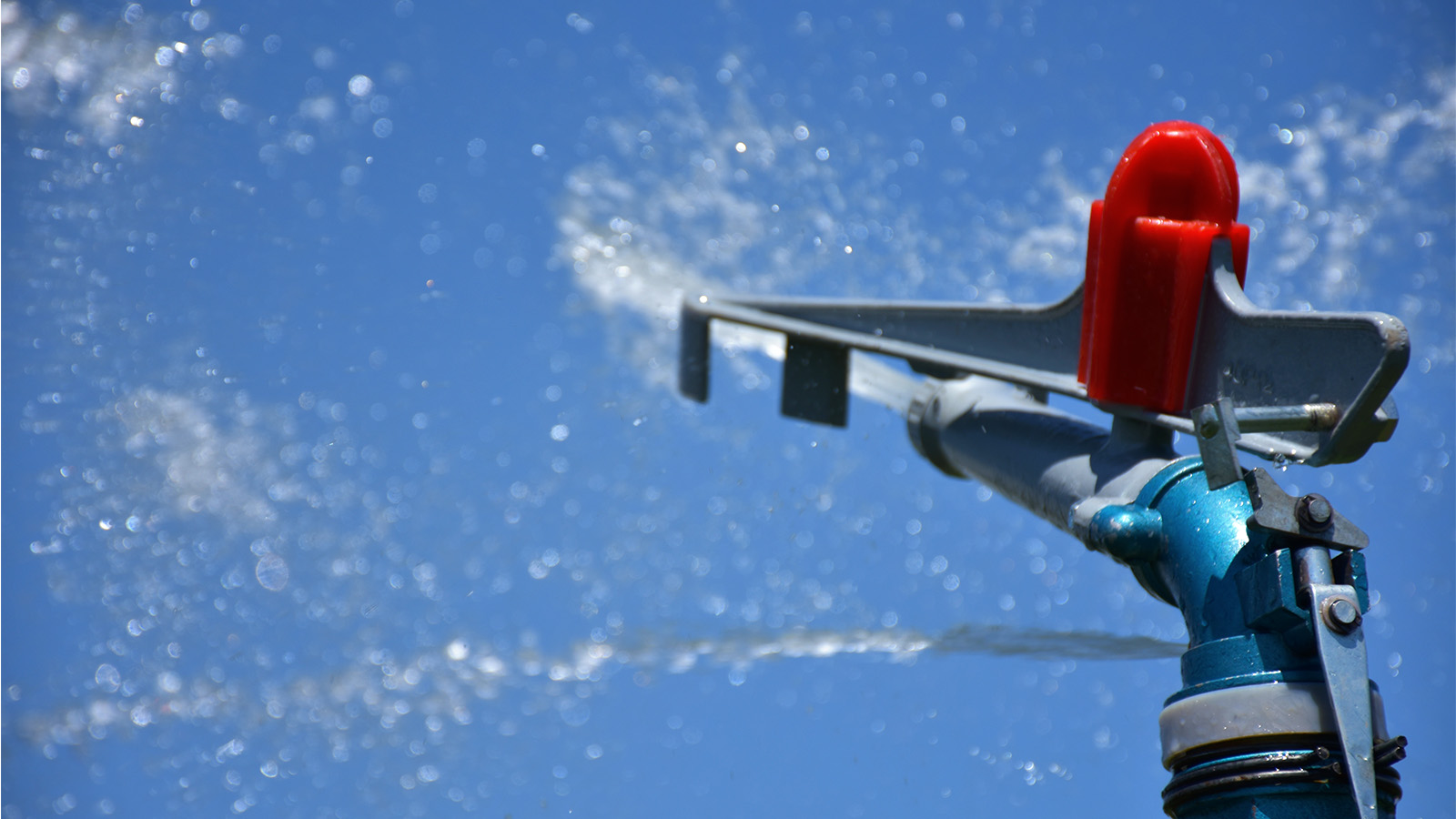
An ordinary size rain gun sprinkler at work after installation by Grekkon Limited
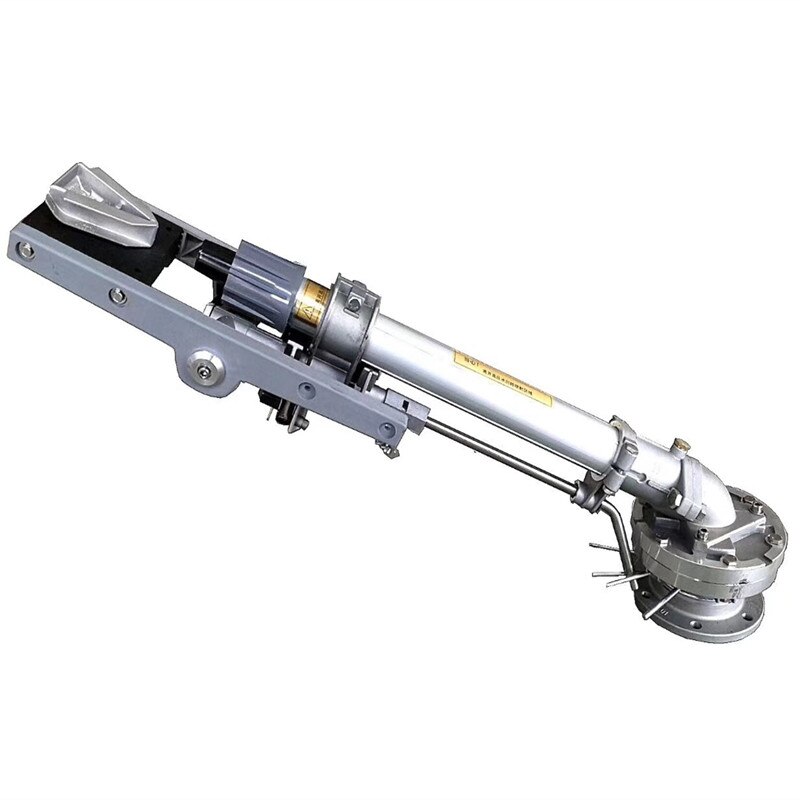
2.5″ giant flange type rain
A flange type rain gun video at work
2. Plastic or brass impact sprinklers for small to medium sized acreage. Our sizes are; 1/2″, 3/4″ and 1″ which have either 2-way, 3-way or 4-way nozzles
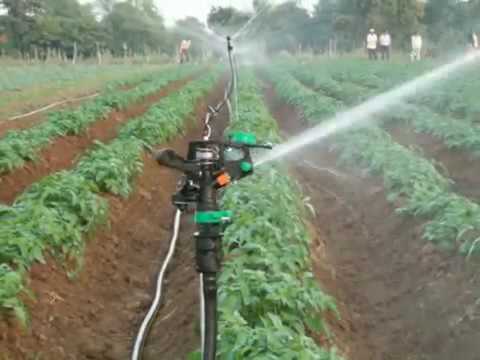
Plastic impact sprinklers
3. Mega-net sprinklers for small to medium-sized areas. We have the 1/2″, 3/4″ and 1″ which have a spray angle of 180 degrees
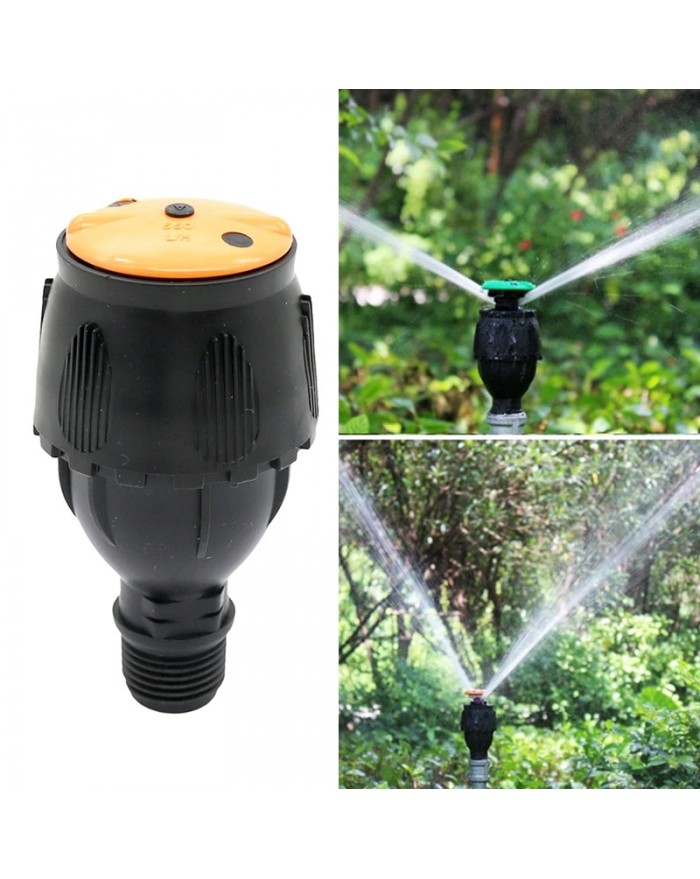
A mega net sprinkler
4. Micro sprinklers for orchards and small areas with a spray angle of 360 degrees
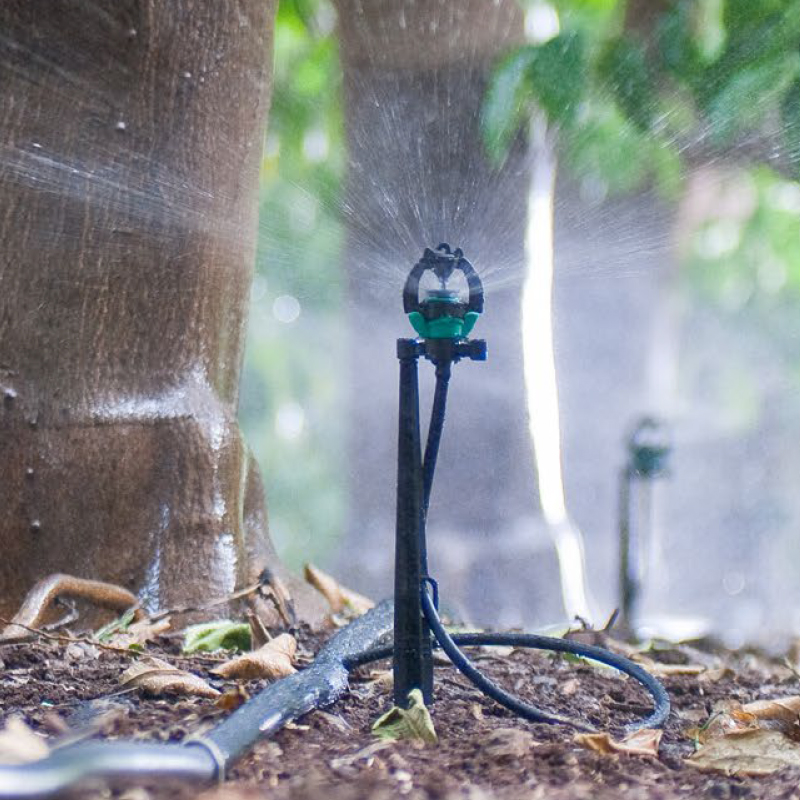
Micro sprinklers in an orchard
5. Pop up sprinklers for lawn irrigation. Our sizes are1/2″ and 3/4″ which spray up to 360 degrees
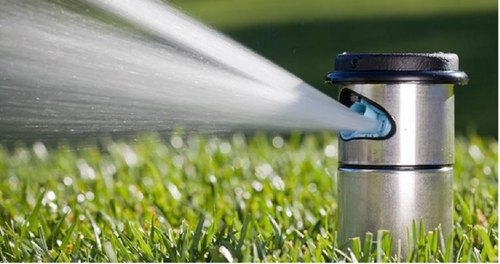
A lawn pop up sprinkler
6. Butterfly mini sprinklers for small gardens or and lawns available as 1/2″
How to choose your overhead sprinklers in Kenya
- Land size. Rain guns for large acreage, and micro-sprinklers for small plots of land
- Crop type. Pop-ups for lawn irrigation, all other sprinklers for field crops
- Ground elevation. Gravity power from high elevations will swing micro and impact sprinklers. Rain guns, Meganets, and pop-ups work with water pumps
- Grower’s budget. It determines the sprinkler type and number of units to install
Our sprinkler irrigation system design considers the above 4 factors during our site visits conducted before a sprinkler irrigation system is installed
Components of an overhead sprinkler irrigation system
- Mainline. This is PVC, HDPE, or GI to supply water from the source. It will be connected directly to the sprinkler riser pipe, or to the sub-main line
- Sub mainline. This one is connected directly to the sprinkler rise pipe, or to the sprinkler itself from the mainline. It is also PVC, HDPE, GI or a delivery/ layflat pipe
- Riser pipe. This receives water from the main line or sub-main line to the sprinkler It is also PVC, HDPE, or a GI
- Tripod or pipe stand. It is the sprinkler’s support structure
- Gate valves. They allow or block water flow to the sub mainline
Overhead sprinkler prices in Kenya per acre
- Rain gun sprinkler system from Kes 65,000
- Impact and Mega-net sprinklers from Kes 50,000
- Butterfly and Micro jet sprinklers from Kes 85,000
- Pop-up sprinklers from Kes 120,000
FAQs
A. What are the pros and cons of an overhead sprinkler irrigation?
I. Overhead sprinkler irrigation advantages
- There is a wide choice to select from
- It is easy to install
- It is cheaper than drip irrigation
- Easy to move from one point of the farm to another
II. Disadvantages
- It is water wasteful
- During strong winds, water distribution is uneven
- High running cost because a water pump is needed
- It requires labour to move it from one location to another if it’s a portable system
B. How does an overhead sprinkler irrigation system work?
- Water is pumped under high pressure from the source; tank, reservoir, lake, river to the mainline
- From the mainline, it is distributed to the sub-main lines
- From the sub-mainlines, it enters the sprinklers under pressure. This pressure swings the sprinkler in a circular motion
- The sprinkler breaks the water into fine droplets, which fall on the crop
C. How do I choose a water pump for my sprinkler system?
Consider the following when selecting a sprinkler water pump
i. Pressure rating of the sprinkler. The water pump’s pressure rating must exceed that of the sprinkler to compensate for pressure losses in the piping system. Grekkon Limited’s technical team advises growers on the best match. The larger the pipe diameter, the lower the pressure loss along the horizontal pumping distance. The longer the horizontal and vertical pumping distance, the greater the pressure loos. Pressure loss during irrigation water reticulation is also as a result of leakages along the piping system
ii. Discharge rate of the sprinkler. Like the pressure rating above, this will be higher for the water pump to cater for any fluid losses
iii. Inlet diameter of the sprinkler. That of the pump has to match this
D. Which sprinkler head is best?
Rotor sprinklers are the most efficient sprinklers in the market. They have the least run-off, and irrigate slowly, hence less wastage
Cabbage Farming in Kenya
Cabbage farming in Kenya through irrigation requires even moisture to produce good heads. Our cabbage farming irrigation systems are; drip irrigation, sprinkler systems irrigation, and rain hose kits irrigation. Farmers’ cabbage water requirements are independent of the varieties grown. The best cabbage varieties to grow in Kenya are hybrids, which require consistent irrigation during growth. Successful cabbage farmers who supply the cabbage market in Kenya water 25 to 37 litres weekly. Good cabbage head sizes weighing 5kgs make it easy for a grower to choose where to sell cabbages in Kenya. Below is a review of cabbage irrigation farming requirements by systems
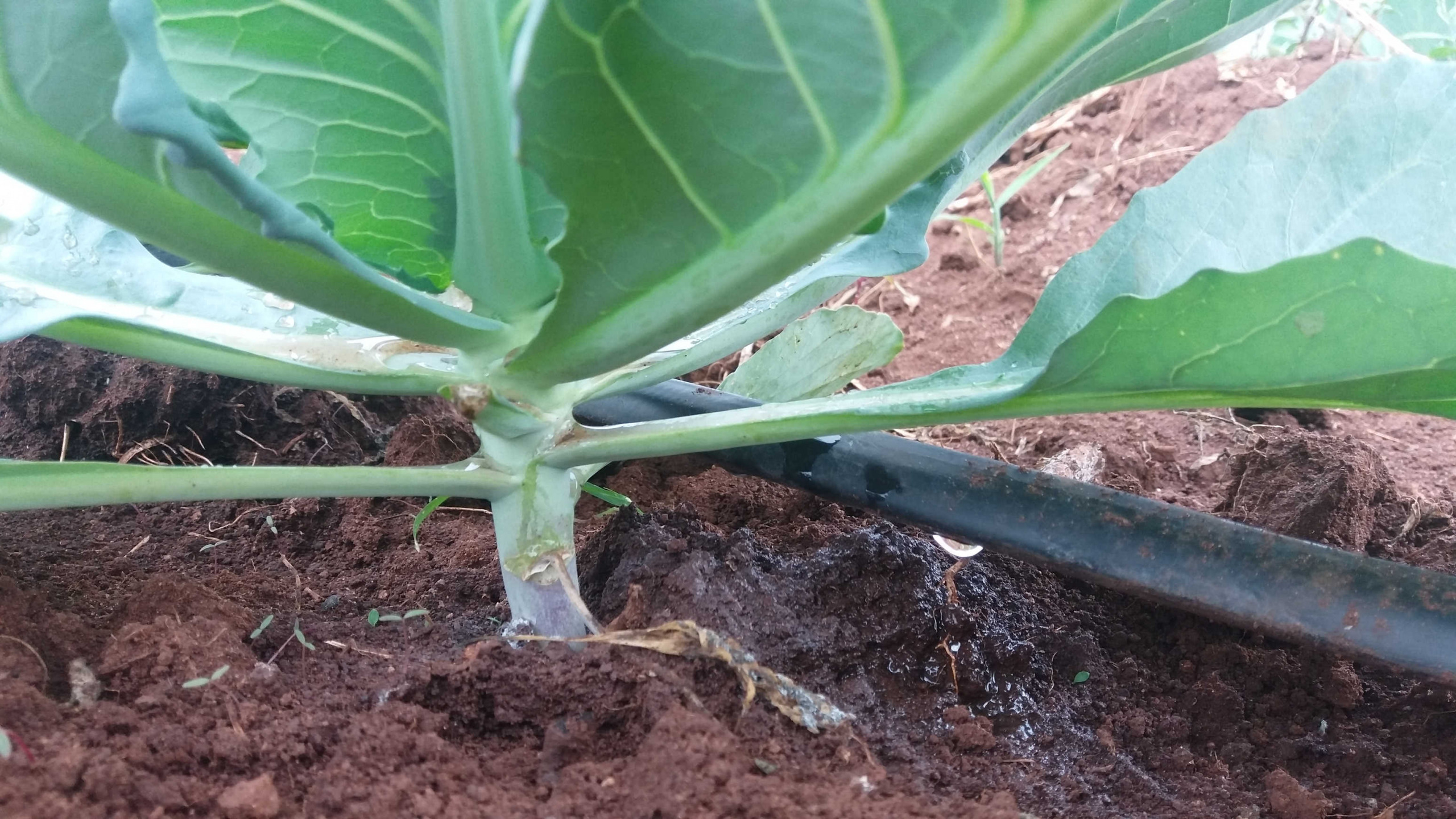
Drip irrigation in cabbage
1. Cabbage farming in Kenya; how to install a drip irrigation system on cabbage
- Bed making
Your beds will be 1M wide to allow for 3 rows of drip lines, and 30cm high for good drainage. Drainage is key to prevent root rot for cabbage as a result of too much stagnant water.
- Drip irrigation tapes laying
2 rows of drip lines per bed. Each drip line row is 20cm apart and the line is 20cm from the edge of the bed. Without beds, each row is 30cm apart
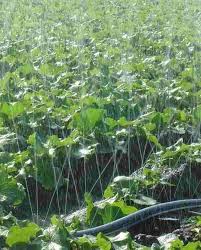
Rain hose irrigation in a cabbage farm
2. How to install a sprinkler irrigation system or rain hose irrigation kit
If you will not make beds, as shown above, then your cabbage spacing is 60 cm apart for rows. The inter-crop spacing is 30 cm to 45 cm. Place your sprinklers or rain hose pipes according to the radius of spray for each to cover the entire area.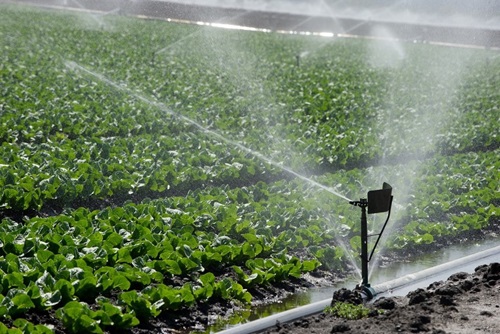
Overhead or sprinkler irrigation on cabbage
Cabbage Farming in Kenya FAQs
- 1-acre drip irrigation kit; Kes 145,000
- 1/2 acre drip irrigation kit; Kes 75,000
- 1/4 acre drip irrigation kit; Kes 40,000
- 1/8 acre drip irrigation; Kes 25,000
Use sparsely spaced drip emitters 30cm apart. This cabbage drip irrigation system will water every plant and they will be no irrigation dry shadows. Irrigate in the morning hours and avoid late evening irrigation
Yes. A cabbage plant will require up to 1inch or 25 litres per meter square weekly during the early stage. At maturity, this will be 2 inches/ 50 litres per meter square under dry conditions. Too much water causes root rot, so monitor that the soil is not overwatered
Stop watering onions 7 days before harvest. This improves the shelf life
Grekkon Limited’s drip irrigation systems operate at 10 to 35 PSI
Yes. 10 to 12 hours of sunlight for head formation in the tropics
Yes. Half an inch/ 12.5 litres per meter square of water 4 times a week is enough.
Yes
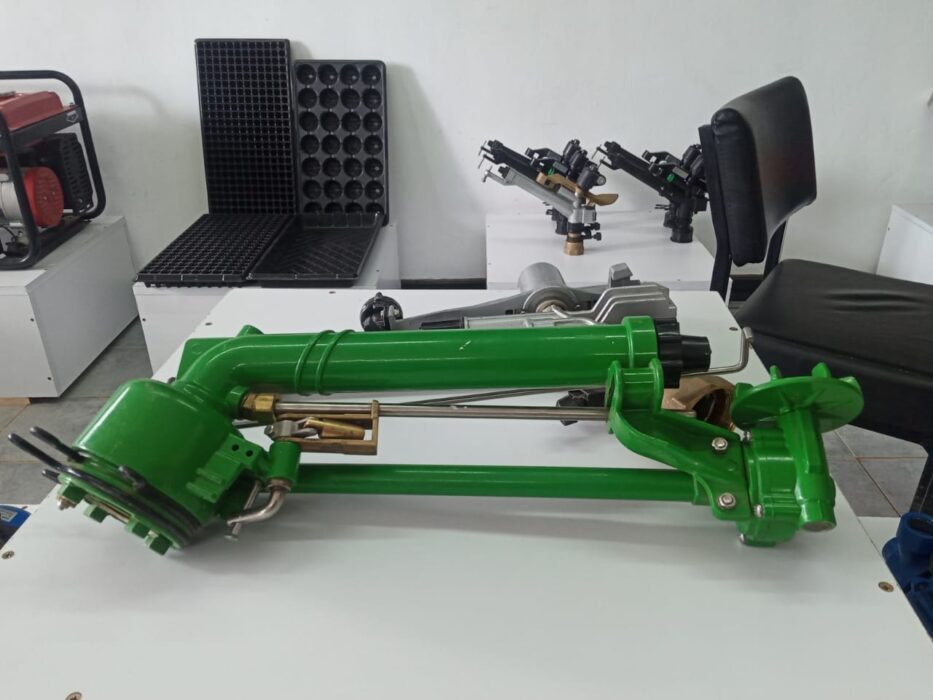
Irrigation company in Nyahururu
The story of an irrigation company in Nyahururu goes like this….In 2017, two Kenyan agri-prenuers came together to establish an irrigation systems firm to serve small to medium scale commercial farmers in Kenya. This was by providing tailored professional irrigation systems set up solutions that were within these farmers’ budgets. At the same time, improving the clients’ overall yield, and income from farming. The motivation to focus on this niche was because of the presence of large international irrigation service providers. Their clientele were the large ornamental, cereal and vegetable growers. Smaller growers had to fend for themselves because they were never a priority for these large corporates.
The other objective was to do further by offering expert irrigation, greenhouse, water pumps, and dam lining expertise to these small scale to medium scale commercial farmers, who had no professional entity to consult for such. This was through physical site visits to carry out assessments, provide advice, and carry out irrigation project reviews afterwards. And so, Grekkon Limited – Irrigation Hub was born. It was headquartered in Nairobi, Kenya’s capital, and in August 2020, Grekkon Limited opened Nyahururu irrigation hub in Nyahururu town.
The irrigation company in Nyahururu serves farmers in; Nyandarua, Nakuru, Laikipia, and Samburu counties. It is located along the Olkalau- Nyahururu road.
Innovation
Grekkon Limited is the first irrigation systems company in eastern Africa to introduce the rain hose irrigation system. This new product solved many irrigation challenges for commercial vegetable and corn farmers. The company is the market leader in research and commercialization of natural solar dryers. Each unit designed to meet the product or market drying requirements. Today, Grekkon Limited is the largest supplier of natural solar dryers in Northern Kenya, Nakuru, Laikipia and Samburu regions.
Team
Grekkon Limited’s resounding success is largely due to its team of field professionals in Nyahururu. They provide engineering, commercial, and technical services. In a first in the market, the company organizes ‘training days’ in various regions of the counties. Here, where growers come to learn of new and existing technologies. This knowledge sharing module has proved effective in addressing basic irrigation challenges that farmers go through. It has created trust in the company’s expertise.
Irrigation Company in Nyahururu
The Future
There is a growing number of medium scale farmers living in the cities, but farming in the upcountry. The need to create a web-based irrigation monitoring system is more pronounced than ever. Grekkon Limited’s IT team is developing a gadget responsive tool. It will enable farmers to irrigate and fertilise (through fertigation) their farms remotely. It also woks s a moisture monitoring tool to alert growers when crop moisture levels fall below normal levels.
Multi-Storey Gardens In Kenya
Grekkon Limited’s climate smart agriculture multi-storey gardens in Kenya are a vertical farming system popular with urban vegetable farmers. Growing herbs on a multi-storey garden in Kenya is now a common practice in limited spaces in densely populated locations. They are defined as climate smart agriculture because they conserve land and water
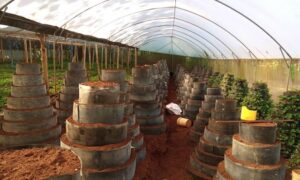
Multi-storey cropping in a greenhouse
What is a multi-storey garden?
It is a vertical farming method that limited space to create gardens stacked on each other. These vegetable crops (most common for kitchen gardens) provide a fresh supply of vegetables for subsistence or commercial use. Commonly grown crops are;
- Vegetables; kales, spinach, strawberry, coriander, carrot, garlic, leeks, black nightshade, amaranth
- Herbs and spices; rosemary, lemon grass, citronella, and mint
- Fruits; strawberry
A grower will choose to have the multi-storey farming system out in the open, or enclosed in a greenhouse or shade house. This multi-storey cropping is determined by the crop grown, or other factors such as crop destruction by pests or disturbance from pets. A grower will choose to have a shade net or dam liner as the supporting basis of this pyramid farming in Kenya. In this article, we look at the dam liner option
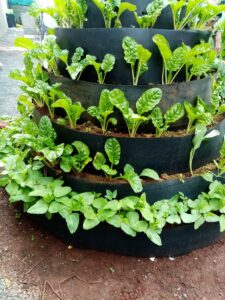
Spinach growing in on a kitchen multi-storey garden made from dam liner material
Our multi-storey garden price is Kes 2,500 a unit for the dam liner material type. This multi-storey garden cost covers all material and labor
How do you make multi-storey gardens in Kenya?
Key attributes of the dam liner material type garden
- Layers. It has 6 layers including the base
- Circumference. The base layer has a 6M circumference
- Layer reduction by height. Each layer is a meter less in circumference as it rises
- Height. Each layer has a height of 0.2M / 20cm
- Material. 0.75mm or 1mm thick HDPE dam liner to hold the soil together. The dam liner is bolted or welded at the joint
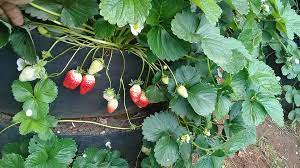
Strawberry growing on a multi-storey garden
To reduce soil compaction, and improve soil aeration, we mix soil with manure at a ratio of 2:1. On a space of 2M x 2M, a multi-storey garden will hold 180 to 250 plants. Compare this with a sack/ shade net supported garden that has 100-150 plants. And again with conventional ground farming that has 30-60 plants over the same area. All calculations factor in the walking path
Multi-storey garden materials
- dam liner
- joining clips
- soil
- fertiliser
How to irrigate multi-storey gardens in Kenya
Pre-perforated rip lines or button drippers irrigate these crops. Frequency of irrigation is twice or thrice weekly according to the prevailing weather
Multi-storey gardens in Kenya
FAQs
1. How to prepare a multi storey garden?
As described under the heading How do you make multi-storey gardens in Kenya? above
2. What is the size of a multi-storey garden?
6 square feet
3. What are the advantages of a multi-storey garden?
- It is easy to assemble, and maintain
- It saves on land and water
- They are done over small spaces
- You can grow many typesof vegetable crops on it
4. What are the disdavantages of a multi-storey garden?
- It takes time to design and make
- It requires training to make for the first time
- Expensive to undertake on a large scale. Ideal for small spaces
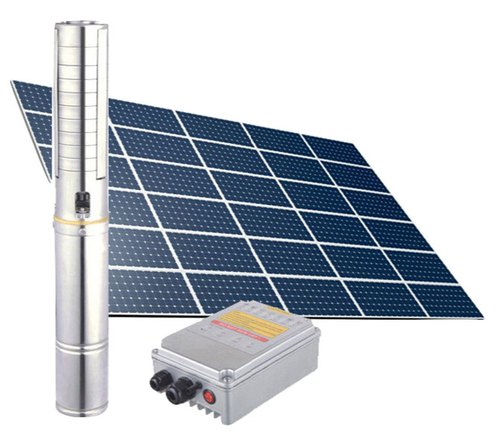
Solar Water Pump Prices
Solar water pump prices in Kenya by Grekkon Limited are provided based on the pump specs
Our submersible solar water pumps for sale in Kenya are categorised as;
- Motor size. This is given in kilo watts (kW) or horse power (Hp). The motor operates on direct current (DC) generated by the solar panels, or from a battery. The larger the motor size, the more the power a motor consumes, and provides to the pump
- Head. This is the pressure rating provided in meters (M) or bar. It determines how far vertically that pump will push water. The higher the pressure rating, the higher the push. Deep wells use higher pressure rated submersible solar pumps than shallow wells
- Flow rate. It is the volume of water evacuated over a given time unit. This is given as litres per second, or per minute, or as cubic litres per hour. This determines the size of the outlet pipe. A pump that evacuates more water has a larger outlet
Smaller domestic water pumps are portable solar water pumps. It is easy to move them from one shallow well to another. This is not the case for large, permanent, deep well solar water pumps
Solar Water Pump Prices In Kenya
| Model No | Power Hp | Watts | No & Panel Size | Head (M) | Flow rate (liters/ hour) | Price in Kes |
| SP 0.5N | 0.6 | 700 | 300W x 1pc | 40M | 5,800 | 37,120 |
| SP 0.6N | 0.8 | 1,200 | 300W x 2pcs | 60M | 5,800 | 40,215 |
| SP 0.8N | 1.1 | 1,300 | 300W x 3pcs | 70M | 5,800 | 46,400 |
| SP 1.0N | 1.3 | 1,400 | 300W x 3pcs | 80M | 5,800 | 52,600 |
The prices shown above are for solar water pumps for wells less than 100M. Beyond this, we provide specific pumps that match the borehole’s water specs. We install submersible solar water pumps across east Africa for all well sizes. Before an installation is made, a well analysis is conducted to ensure the right solar submersible water pump is provided.
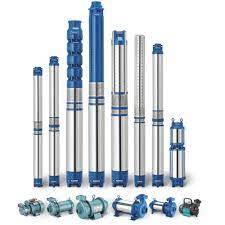
Water Pumps In Kenya
Water pumps in Kenya by Grekkon Limited are varied for different purposes. This provides a wide choice to select from for growers according to irrigation use. Below are water pumps by Grekkon Limited
Water pumps in Kenya
Categorisation
1. By displacement
1.1. Centrifugal pumps work through centrifugal force to drive water that enters the impeller. They use the rotational energy from the spinning impeller to produce hydrodynamic energy
1.2. Positive displacement water pumps use a piston, a diaphragm, or a rotating cog or gear to mechanically move a fixed volume of water through the pump chamber
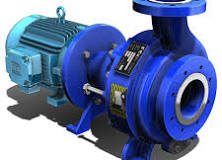
An electric centrifugal water pump
2. By Location
2.1. Surface pumps suck water through an inlet pipe, then pump it out from an outlet pipe. They are set horizontally on dry surface. Theses are; electric surface pumps including booster pumps, solar surface pumps, diesel and petrol generator water pumps
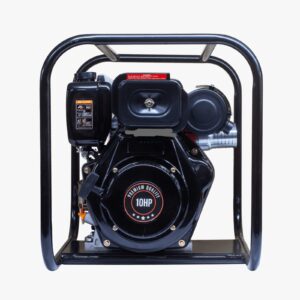
A diesel water pump
2.2. Submersible water pumps work under water in wells. The size and power depends on the well depth, and discharge rate. They are either solar or electric powered
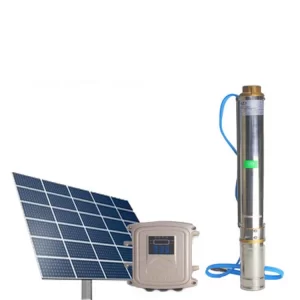
A submersible solar water pump
3. By power output
3.1. Electric motor powered pumps are either electric (AC current), or solar (DC current) water pumps
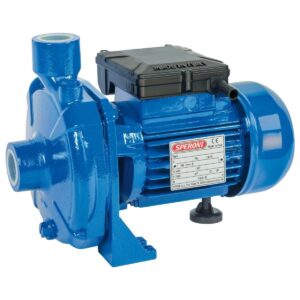
An electric surface pump
3.2. Generator powered water pumps are either diesel or petrol types. These are available as high pressure, high volume, low pressure and low volume
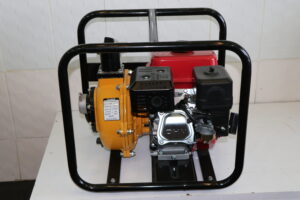
A petrol water pump
Water Pumps In Kenya
What To Consider When Buying Your Water Pump
1. The head/ pressure rating
This is the vertical pumping distance in meters or bars. The higher it is, the higher the pressure needed, and the more powerful is the engine or motor. Fuel engine (generator) or electric motor power is horse power (Hp), or in Kilowatts (kW) for the latter
2. The flow rate
This is the amount of water pumped evacuated per unit time. It is in litres per minute or per hour. The higher it is, the larger the water pump inlet and outlet size
For agricultural use, PVC or HDPE water pipes are connected to these pumps. The pipes evacuate water to the crops
3. The power rating
The motor or engine size provided in kilowatts (kW) for the former, and in horse power (Hp) for the latter determines the water pump’s efficiency. The larger the flow rate and the discharge, so will the engine or motor be
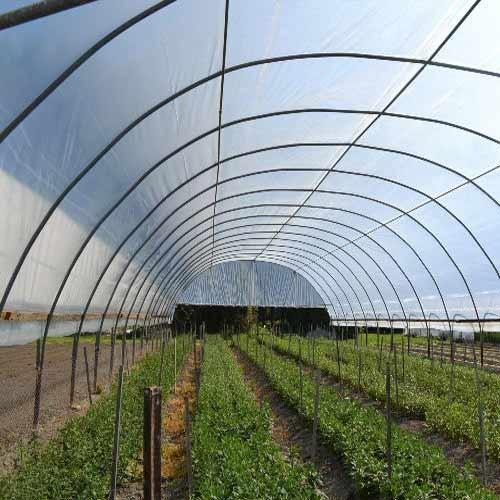
Greenhouse Company In Kenya
Grekkon Limited is the low cost premier greenhouse company in Kenya, known for its galvanised steel tunnel type, and open ventilation type units. We provide affordable greenhouses in Kenya with each unit constructed tailored to the grower’s specifications.
There is a choice of wooden or metallic greenhouses from our choice of low cost greenhouse construction in Kenya. All greenhouse sizes unit have a drip irrigation system installed, with water supplied via a HDPE pipe
How To Construct A Greenhouse
- Assessment of the location. Is it high, mid or low altitude? Tunnel type units are for the highlands and cooler areas. Open ventilation type units for the warm mid to coastal locations
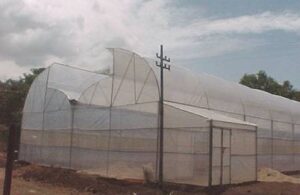
Open ventilation type greenhouse
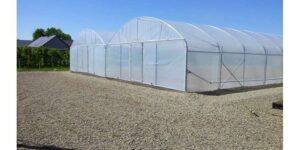
Tunnel type greenhouses
2. Check the land topography, and water availability. This determines the greenhouse location
3. Understand the target crop type.
This informs us if the unit will have an internal crop support system, and how strong it should be. A strawberry greenhouse will need none, but a tomato or pepper unit will. It advises on the greenhouse net to install. Strawberry and tomato will have different nets on the sides
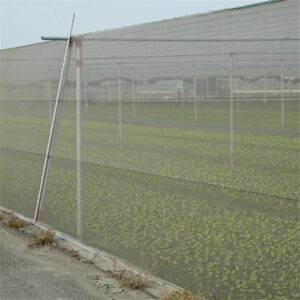
An insect net on the side to keep away pests
4. Material selection.
- Galvanised steel. Galvanisation keeps it from rust
- UV treated greenhouse polythene with anti-drip properties. UV treatment prevents rapid sun degradation, anti- drip treatment prevents dew formation on the paper. Dew drops falling on the crop are a precursor to fungal diseases. It covers the top and sides of a greenhouse structure to protect the plants within from the elements. It allows in the right spectrum of light for crop growth while filtering away the less needed part of light by the crop. All this creates a an internal environment favourable to plant growth regardless of the external environment. This allows for all year production, improves crop yield and quality
- UV treated insect/ bird net. The former keeps away insect pests, while the latter allows in insects for pollination, but prevents entry of bird pests
- Stainless steel profiles and plastic coated wiggle wires hold the greenhouse paper and netting onto the steel frame
As a greenhouse company in Kenya, the above are the key considerations we make when advising growers on the choice of greenhouse units
Greenhouse Prices In Kenya
1. Metallic
| Greenhouse Type | ||||
| Tunnel Type | Open Ventilated Type | |||
| Greenhouse Size | 15M x 8M | 290,000 | 330,000 | |
| 20M x 8M | 300,000 | 340,000 | ||
| 24M x 8M | 320,000 | 350,000 | ||
| 30M x 8M | 460,000 | 540,000 | ||
| 40M x 8M | 575,000 | 655,000 | ||
| 15M x 16M | 460,000 | 555,000 | ||
| 24M x 16M | 620,000 | 665,000 | ||
| 30M x 16M | 900,000 | 990,000 | ||
| 40M x 16M | 1,100,000 | 1,240,000 | ||
2. Wooden
| Dimensions in meters | Tomato Crop Population | Price in KES |
| 15 x 8 | 600 | KES 140,000 |
| 24 x 8 | 800 | KES 160,000 |
| 30 x 8 | 1,200 | KES 190,000 |
| 30 x 16 | 2,500 | KES 370,000 |
How To Construct Timber Greenhouses
i. Know the crop type to plant. This will guide on the greenhouse design and amount of material to use. For instance, a tomato greenhouse will take more material than one with herbs. This is because tomato will require training, and herbs won’t. It also guides on the greenhouse paper to cover with. You will have more light for fruiting crops like tomato, capsicum, chilli, cucumber, and strawberry, or bi/ multicolored flowers. Have a clear polythene for these. Mono-color flowers will have the yellow polythene cover
ii. Determine the plant population you need. This informs the area of the greenhouse
iii. Once you determine the amount of timber required based on the greenhouse area, treat it. This is to prevent weevils and termites from attacking the timber which reduces it’s lifespan. Do not apply motor oil on the timber as treatment. This is because it will contaminate food crops in the greenhouse
iv. Your construction design is the vented type. This is because the wood cannot be curved to a tunnel type design
v. Cover the roof and side ventilation with an insect net. Select the high density gauge which is effective in keeping away white-flies
vi. Make the beds according to the crop type. Beds are important in managing drainage. For seedling production, set up the tables 1M high
vii. Set up the drip irrigation system on the beds. For seedling production, set up he misting or fogging system above. The misters or foggers are 1M apart
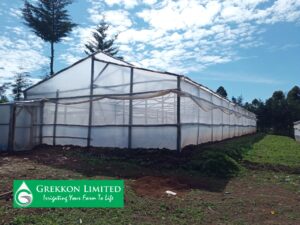
A wooden greenhouse by Grekkon Limited
How to Choose Greenhouse Nets
Greenhouse nets allow for ventilation of the crops, and personnel working in the unit. Below are the consideration made when deciding the choice of greenhouse net to install on the sides
1. Crop type. Some crop types require higher light intensity than others. In this case, a lower shade % net is appropriate for the former. Fruiting crops such as; tomato, strawberry, capsicums, and so on require more light than leafy vegetables. Examples are; cabbage, spinach, collards, kale etc.
2. Crop stage of growth. The shade net in the nursery will block out more heat, than the one for established crops in the field
3. Location of the farm. In the highlands where the heat intensity is less, a lower shade net will protect crops well. In the mid to low altitudes where it’s hotter, a higher shade net works best.
4. Latitude. Countries such as Kenya lie along the equator where solar radiation is high. Your choice of greenhouse net will have higher UV treatment than that of a temperate region
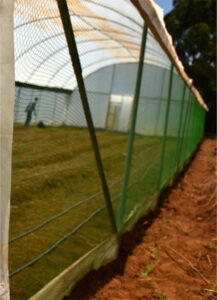
A bird net on a strawberry greenhouse to allow in insects for pollination, while keeping away bird pests
Greenhouse Company In Kenya
FAQs
a. What materials are needed to build a greenhouse?
- UV treated greenhouse polythene
- Steel pipes
- Insect netting
- Profiles and wires
b. Can I grow year-round in a greenhouse?
Yes because the crop is protected from the elements of weather
c. Do greenhouses make money?
Yes they do with a high-value crop
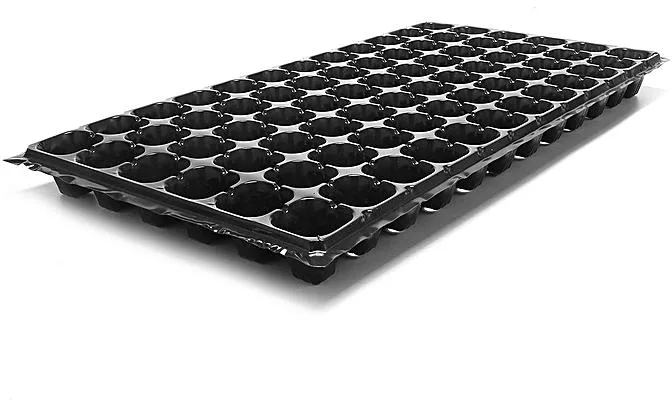
Seedling Trays
Grekkon Limited is a large seedling trays supplier in Kenya. Our black PVC seedling trays for sale in Kenya are for propagation of every vegetable, fruit tree or forestry seedlings or cuttings. These nursery trays work with planting media such as coco peat, peat moss or vermiculite. The soil- less media is sanitised from crop pests and diseases. Every tray has anti-UV treatment to prevent rapid degradation by the sun when placed outdoors. Our nursery trays come in a variety of cell numbers, and sizes. The fewer the cells in a tray, the larger the size, and vice versa. The price of nursery trays when paid for is insignificant when put against the immense benefits these trays provide. Grekkon Limited’s seedling trays are re-usable over many seasons of seedlings or cuttings growth.
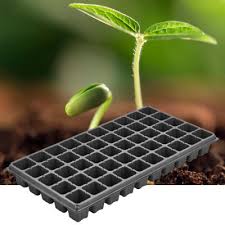
Seedling Trays Prices In Kenya
| Cell Number | Cell Dimensions (L x W x D) | Price |
| 28 | 75 | |
| 50 | 75 | |
| 66 | 75 | |
| 128 | 75 | |
| 160 | 75 | |
| 200 | 75 | |
| 204 | 75 | |
| 288 | 75 |
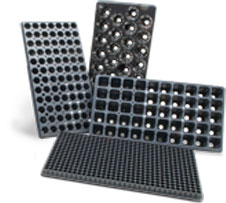
Advantages of using trays for seedlings
- Reduces incidences of damping off caused by overcrowding and non treated soil
- You are assured of good germination compared to soil
- There is much improved root development and reduces incidences of transplanting shock
- Crops grown from germination trays mature faster as they quickly establish once transplanted
- Uniform harvesting as compared to those raised directly in the soil.
- They can easily be transported with zero damage
Steps to plant seeds in trays
- Add the planting media up to about 80% of the cell volume
- Place the seed a single seed at the top of this media
- Do this for all cells in the tray
- Add another layer of the planting media to fill up the small space left. This will cover the seed
- Add water
- Place the planting tray in a warm place, with ample light, and free of pests
- Place a label showing; the crop type, date of planting, expected date of transplanting
Do not stack the trays on top of each other
Grekkon Limited’s nursery trays are used by small, medium, and large scale farmers for high value crops. They are available in all our outlets countrywide. The company agronomy team trains new farmers on ;
- selection by crop type or stage of transplanting
- planting media
- re-use
- placement in the greenhouse, shade net or other shelter
Proper storage of seedling trays after use ensures their longevity. Stacking them together in a sheltered place is most recommended. Clean them in a disinfectant after use, just before storage. This treatment keeps them sanitised and free of any pests or disease causing pathogens
Germination trays for sale;
- Tomato seedling trays
A farmer growing tomato for the greenhouse will use the 200 or 204 cell trays. These tomatoes will be small in size during transplanting to this protected environment. A farmer growing outdoor tomato will use the 128 – 160 hole seedling trays. These tomato seedlings will be bigger and stronger to withstand harsh climatic conditions in the field.
- Onion seedling trays.
Growers doing onions will use the 288 cell seedling trays.
- Different seedling production in trays.
Onion has tiny seedlings which at maturity fit well in small cells. Tomato, peppers, cabbage, and chilies will use larger cells seedling trays.
- Seedlings production in trays.
Apply the coco peat planting media on all cells up to 3/4. Place the tiny seeds individually in each cell, then cover with the coco peat planting media
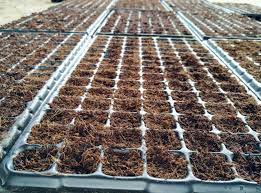
Germination trays with coco peat ready for planting
Seedling Trays
FAQs
i. What are seedling tray prices?
Our UV-treated PVC seedling trays cost Kes 90 apiece for all cell numbers. These seedlings trays prices in Kenya are retail, and a discount is offered for bulk buyers
ii. What can I use for seed trays?
Vegetable seed germination, fruit tree or forestry seedlings growth, and silkworm growing
iii. How do you use germination trays?
In an era when farmers have graduated to high-value hybrid vegetable seeds;
- germination trays make it possible to account for each seedling, the reason that every seed is placed manually one by one
- this makes it easy to count actual germination and seedling survivals
- the seedlings have less pest and disease infestation because the trays are used with sanitized growing media
- at transplanting, the growing media covers the root system which prevents transplanting shock in the field or greenhouse
- transplanting shock slows down crop growth and delays maturity
iv. When should I transplant my seed trays?
When the crop has been hardened enough to withstand open field, or greenhouse conditions
v. How do you use seed trays?
Add treated planting media in each cell, then sow one seed per cell. Water it to keep it moist till transplanting
vi. How deep should a seed tray be?
Not less than 5cm for vegetable crops, much deeper for tree crops like forestry and fruit
Grekkon Limited’s agronomists guide every farmer during procurement on the most appropriate tray to use.
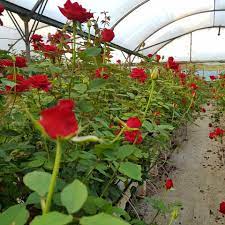
Low Cost Greenhouses In Kenya
Our low cost greenhouses in Kenya are either wooden or metallic in structure, vented or tunnel in shape. Internally, they will or will not have crop support systems, and the steel will be galvanised or painted with a protective coat
These low cost greenhouse construction in Kenya attributes are explained in detail below:
- Greenhouse size; the larger it, the lower the unit area cost
- Greenhouse material type. Wooden greenhouses are cheaper than steel frame greenhouses, because steel is more costly. However, they have a shorter lifespan

A low cost wooden greenhouse in Kenya by Grekkon Limited
3. Greenhouse design. Tunnel type greenhouses are lessor priced than vented types. The former are for cool highland locations so that they retain heat, while the latter are for hot locations for less build up of heat

Tunnel type greenhouse
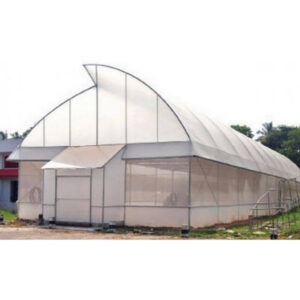
A vented type greenhouse structure
4. Greenhouse use. Is it for flowers, vegetables, strawberry, herbs and spices or seedlings production? This influences the infrastructure set up within the greenhouse. Crops that do not require a greenhouse with an internal crop support system such as; strawberry, herbs, and spices have lower greenhouse construction costs
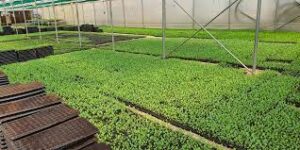
Seedlings production in a greenhouse
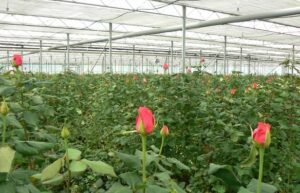
Roses production in greenhouse
5. Steel treatment type. To lower the cost of the greenhouse structure, some growers opt for steel painted with an aluminum or zinc coating. This is less costly than the zinc galvanised steel. However, the paint wears out over time and the greenhouse frame is repainted to prevent rust
As the leading greenhouse company in Kenya, we utilise local greenhouse construction techniques. Our low cost greenhouses in Kenya are for such crops as; roses, carnations, tomato, capsicums, strawberry, and assorted herbs and spices
I. Low Cost Greenhouses in Kenya
1. Greenhouse price in Kenya: Tabulation of steel types
| Greenhouse Type | ||||
| Tunnel Type | Open Ventilated Type | |||
| Greenhouse Sizes | 15M x 8M | 290,000 | 330,000 | |
| 20M x 8M | 300,000 | 340,000 | ||
| 24M x 8M | 320,000 | 350,000 | ||
| 30M x 8M | 460,000 | 540,000 | ||
| 40M x 8M | 575,000 | 655,000 | ||
| 15M x 16M | 460,000 | 555,000 | ||
| 24M x 16M | 620,000 | 665,000 | ||
| 30M x 16M | 900,000 | 990,000 | ||
| 40M x 16M | 1,100,000 | 1,240,000 | ||
2. Low cost wooden greenhouse prices
| Greenhouse sizes | Tomato Crop Population | Price in KES |
| 15 x 8 | 600 | KES 155,000 |
| 24 x 8 | 800 | KES 200,000 |
| 30 x 8 | 1,200 | KES 250,000 |
| 30 x 16 | 2,500 | KES 400,000 |
II. How much does it cost to install a greenhouse in Kenya?
Every tabulated greenhouse price in Kenya above by Grekkon Limited covers both the material and labor cost of greenhouse construction or installation
III. How profitable is greenhouse farming in Kenya?
Every low cost greenhouse for sale in Kenya procured for crop production is a significant investment for the farmer. To optimise revenue and ensure profitability, a grower will adhere to the following
1. Conduct a complete soil test. This will guide the farmer on 2 things
- the right crop nutrition regime
- and the suitability of that soil to establish a greenhouse in regards to any existing soil pests and diseases
2.Choose the right seed. Whatever crop you choose to grow, select the best yielding greenhouse varieties
3. Crop type. The value of the final produce according to market preference
4. Right greenhouse structure. This will be determined by the greenhouse location. Is it a vented or tunnel design?
5. Proper greenhouse polythene color and specs. Follow this guideline
- Yellow polythene is for mono color flowers or none fruiting crops which produce well under lower light intensity
- Clear polythene is for bi or multi colored flowers and any fruiting crop which requires higher light intensity for photosynthesis
- It will have UV treatment to last for long, and to block strong UV rays from reaching the crop
- It will be treated for anti-drip qualities. This prevents dew from forming on the paper and dripping on the crop causing disease infection
6. Irrigation management. As an irrigation company, we provide a detailed irrigation regime tailored to the crop type and growth stage
7. Disease and pest management.
- Have a sanitary pouch at the entrance to sanitize feet, and hands
- Limit access to the greenhouse to a few people
- Daily scouting for pests and diseases
- Have a scheduled pest and disease spray program
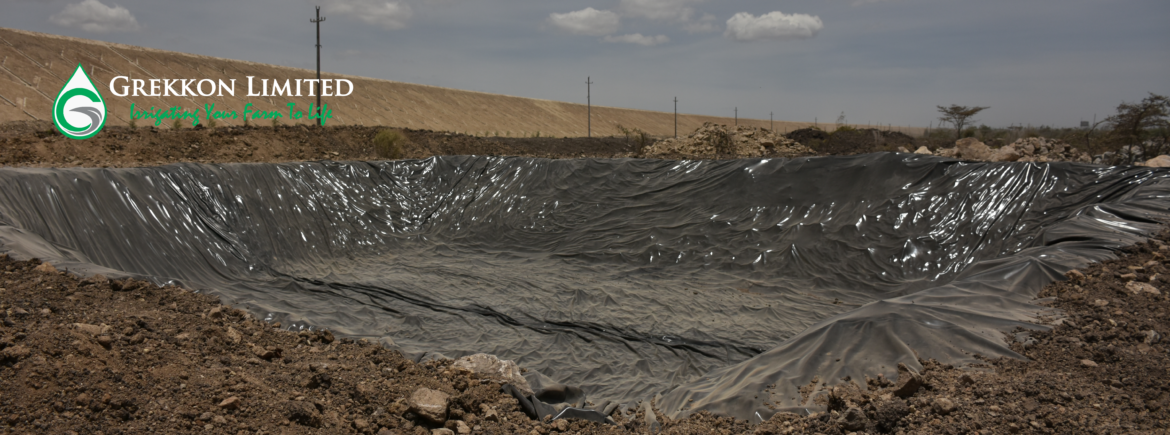
Dam Liners Prices in Kenya
Dam liners prices in Kenya for irrigation by Grekkon Limited vary annually by raw material cost. These dam liners will be installed on reservoirs, or water tanks. Their purpose is to prevent water loss through absorption by the soil surface.
Our dam liner material is high density UV treated geomembrane. UV treatment is to slow down degradation by the sun during external use. Grekkon Limited’s dam liners for sale in Kenya are categorised according to thickness
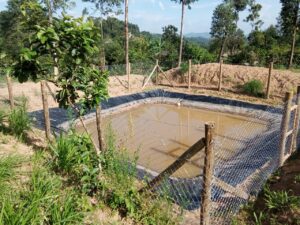
A small water reservoir for vegetable irrigation with a 0.5mm dam liner installed by Grekkon Limited in Emabungo area, Vihiga county. Notice the fence around it fo safety reasons
Dam Liner Prices in Kenya
| Liner Thickness | Material Cost In Kes | Welding Cost In Kes | Installation Cost In Kes | AMOUNT In Kes |
| 0.5mm | 220 | 30 | 30 | 280 |
| 0.75mm | 300 | 30 | 30 | 360 |
| 1mm | 380 | 30 | 30 | 440 |
Introducing the 1.5mm dam liner for Kes 780/M square all inclusive
Notes
- Welding cost applies when the liner required is wider than 8M
- Installation cost is charged when a Grekkon Limited technician installs the liner
Dam Liners Material Thickness Application
- 0.5mm liners are for smooth surfaces without stones or rocks. It will work on a surface with murram. The life span is 8 to 12 years
- 0.75mm liners are for rough surfaces with some stones or rocks. The lifespan is 15 to 20 years
- 1mm liners are for stony or rocky surfaces. The lifespan is over 25 years
The choice of liner thickness is a factor of the liner size. A liner holding 10,000 cubic is thicker than one holding 500 cubic
Dam Liners Prices In Kenya
Processes Every Grower Should Know
I. How to calculate your dam liner size
- Measure your reservoir length (L), width (W) and depth (D) in meters
- Apply the formula; (L+2D+2) + (W+2D+2). This converts your 3D measurement to 2D
II. Steps to install your dam liner
- Clean up your reservoir floor to remove any debris that will perforate the liner
- Lay your liner at the center on the floor of the reservoir
- Spread it out to cover the entire floor, and the walls
- Make a trench 1M away from the edge of the reservoir, all around it
- The trench measure 30cm/ 1ft deep by 30cm/ 1ft wide
- Tuck your liner in this trench, then cover it with lots of soil
III. How To Weld Dam Liners
- Factory welding. Depending on the dam liner size, weld it whole or partially in the factory. The weight and volume of the welded material must be easily portable on site. The latter factor guides on how much of the dam liner material will be put together in the factory
- Site or field welding. This is done on site at the point of dam liner installation. It is the joining together of the partially welded dam liner pieces from the factory. Site welding is done when the entire dam liner could not be wholly put together in the factory. This is as a result of weight or bulkiness, which limits lifting and transportation of the bulky and heavy material. The weight size of the portable material depends on the thickness of the dam liner. The thicker it is, the less it is
- A wedge welding machine or a heat gun/ heat blower is the equipment that does dam liner welding. A wedge machine is what does it in the factory. The heat gun is highly portable, and so is best for field joinery
Dam liner welding involves melting the liner material under high temperature at the point of joining them. Once melted, the 2 layers are laid one over the other and as they harden, become one unit
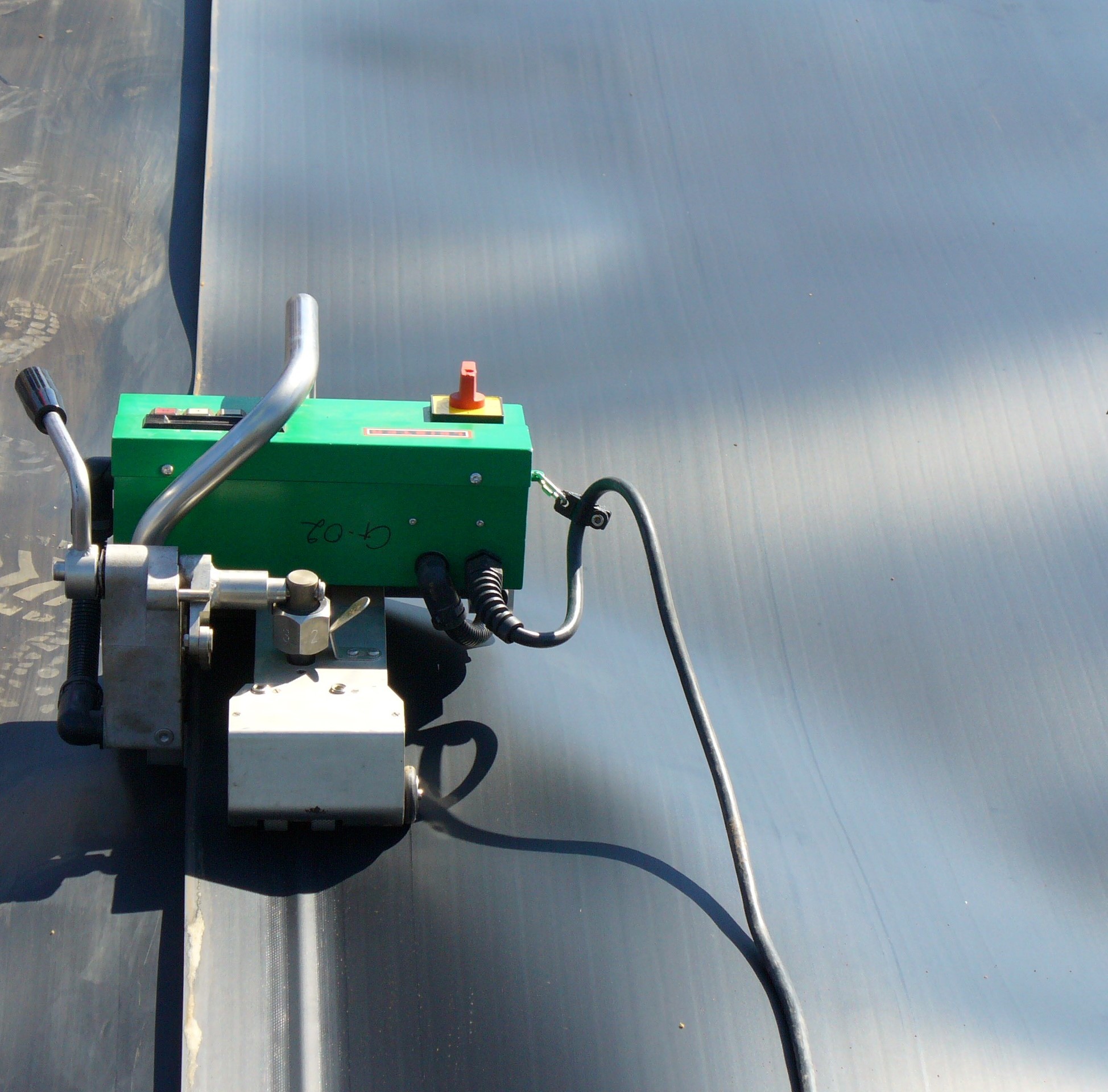
Factory wedge welding of a 1mm thick dam liner
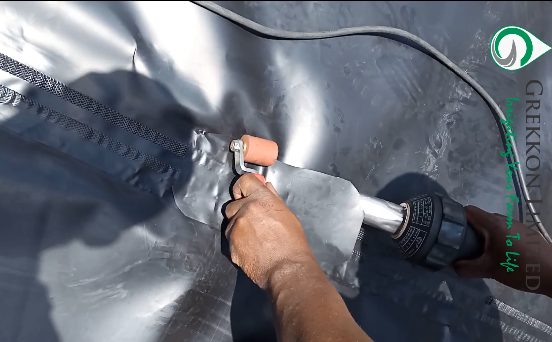
Joining 2 dam liner pieces with a heat gun
IV. How to Harvest Water Using Dam Liners
Factors to consider that will affect your dam liners prices in Kenya
a. Land size
The amount of water required for half an acre is less than that needed for 20 acres. The latter will harvest more water to irrigate the greater acreage, and the former will have less water harvested. The bigger the volume of water reserved, the larger the dam liner size
b. Location
The amount of rain fall is different in every climatic zone. Growers in the cool wet highlands have just a few dry months in the year, while farmers in the dry zones have more dry months than wet. In regions where the interval between rains is long, larger reservoirs are built for the same acreage as that in the cool wet location. Again, dry locations have very high water loss through evaporation. In this case, it is advised to set up a shade net over the water reservoir to manage this water loss
c. Ground Elevation
The farm gradient determines the location of the water pan. Some choose to have it at the lowest part so as to capture run-off water. If it is for crop irrigation, this water is either pumped uphill to a tank from where it flows back by gravity to the crop. Or it is pumped directly to the crop from the water reservoir. Others choose to locate the water pan on the highest point of the farm so that the water, through gravity flows out to the crop. In this case, the farmer does not retain run-off rain water from the farm. On a flat terrain, irrigation water is physically pumped out to either a high storage tank for onward gravity flow to the crop. Or directly to the crop

A low reservoir that collects run-off rain water
d. Farming System
The size of the water pan will differ for irrigation, compared with aquaculture or livestock production
e. Crop Type
Some crops are more water demanding such as leafy vegetables, than others such as herbs. Then some crops like onion are densely spaced while others are like avocado are sparsely populated in the farm. This will determine the water requirement
f. Irrigation System
Every irrigation system has it’s own unique water use. Drip irrigation conserves water while overhead irrigation through sprinklers or rain hose kits spends huge water volumes
g. Surface Texture
The surface texture of the water pan determines the dam liner thickness to install. For a smooth surface, a 0.5mm dam liner is ok. Where the surface is stony or rocky, then the 0.75mm or 1mm dam line is better

